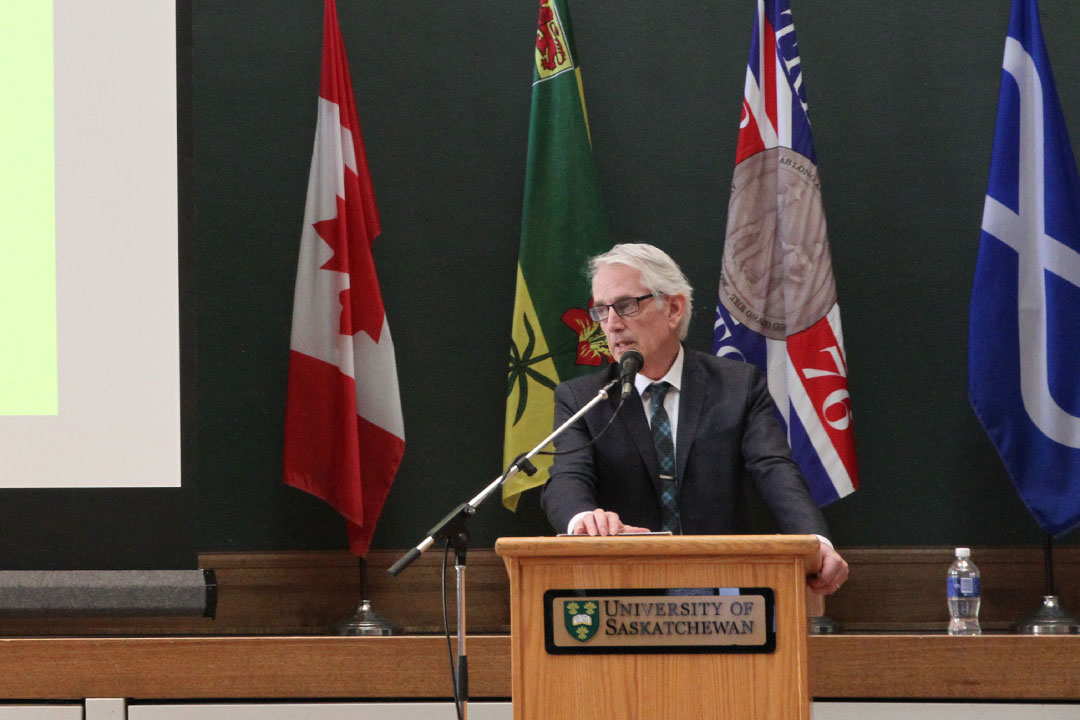Speaking broadly on the theme of connectivity, Stoicheff acknowledged that the University of Saskatchewan, not unlike other universities, is at a unique time in the history of post-secondary institutions.
“Although technologically and digitally we live in a more connected world, culturally and politically we are at risk of living in a less connected one,” he added.
Referencing the Donald Trump-influenced post-truth era we currently live in—where journalists, scholars, scientists and writers face constant challenges to their knowledge and credibility—Stoicheff stressed the importance of connectivity to understand the larger needs of the world and contribute to them.
“Universities are arguably more important now than they have ever been,” he said.
Emerging during last year’s GAA address (Stoicheff’s first as president), the theme of connectivity “pulses emphatically” throughout the Mission, Vision and Values statement—the university’s foundational document and conceptual guideline.
“If we are at risk of living in a disconnected world, replete with immigration orders, Brexits, journalists’ muzzlings, post-truths, intolerance, walls between friendly countries, political ignorance and the defiance of democratic law, the vision document we endorsed last fall tells us that the openness and engagement explicit in connectivity is worth talking about today,” he explained.
And at the local level, institutional setbacks—such as recent budgetary reductions—ought not to shift the focus from the university’s mission and vision.
“When these features of our Mission, Vision and Values document emerged last year, I read them as public commitments to ourselves,” he explained. “Now I read them as much more than that—as commitments to what’s important everywhere in a time when they are deliberately challenges within, of all places, democracies themselves.”
To stay true to those institutional values, Stoicheff posited the need to practise connectivity, specifically by seeking opportunities within Canada’s innovation agenda—capitalizing on our diverse programming and research, infrastructure, and academic talent.
“We should govern ourselves not only on the basis of what we want to be, but what the world needs us to be,” he said, adding that often those two are the same.
Another suggestion for moving forward on the connectivity front was to capitalize on the multidisciplinary linkages across campus.
“The world’s greatest challenges won’t be met by a single researcher in a single discipline, but by many researchers in many disciplines combining forces,” he explained, listing numerous university initiatives—such as the Global Water Futures project, announced last summer, which involves all six signature areas of research.
These are also themes that will carry over to the university’s next integrated plan, ensuring their place not just in a high-level document, but in the institution’s culture.
“We need to build it into our students’ earliest university experiences,” he said. “It involves critical thinking but it also demands horizontal thinking, applying what you learn in one discipline to what you need in another. We need to build on our various successes in this area so that it becomes explicit, not just implicit.”
